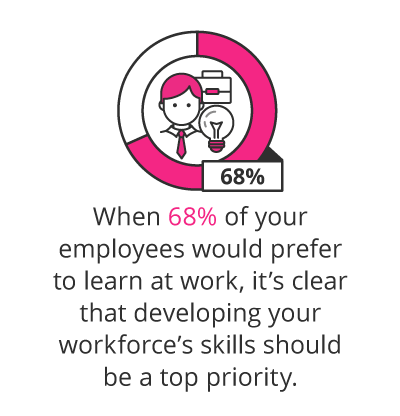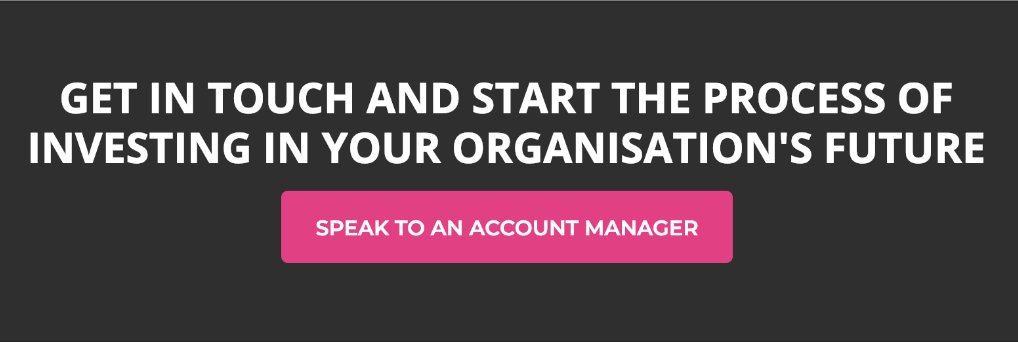7 Steps to Creating an Employee Development Plan
An employee development plan ensures professional development, where both the employer and employee are in a mutually beneficial relationship. An employee development plan should ideally provide direction on career growth as well as training and development opportunities,1 if you’d like more information on this read this article.
Millennials are no longer content to just have a job, work should be meaningful and add value.2 While being financially stable is a part of this, having the time to balance work and family commitments as well as having benefits that are values-based, will engender loyalty to your company. Deloitte produced a Global Human Capital Trends survey in 2018, which surveyed more than 11,000 business leaders, HR leaders, and executives worldwide. “Among this group, social capital plays an outsized role in where they work and what they buy, and 86% of millennials think that business success should be measured in terms of more than just financial performance.”3
In order to have a successful development plan, employee engagement – buy-in from your employees – must play a crucial part in driving the process. This will benefit not just their growth and development, but that of your business too. According to Deloitte, there has been a, “… rapid rise of what we call the social enterprise. This shift reflects the growing importance of social capital in shaping an organisation’s purpose, guiding its relationships with stakeholders, and influencing its ultimate success or failure”.4 Engaged employees value training, professional, and career development. Indeed if these three elements are curated carefully, it will result in increased growth and improvement for both employees and employers.5
Among this group, social capital plays an outsized role in where they work and what they buy, and 86% of millennials think that business success should be measured in terms of more than just financial performance.
Curating purposeful employee growth and development starts with a plan
The key to effectively implementing an employee growth and development plan is to create a purpose for the organisation that motivates employees to be active in working towards and supporting.6 Garnering this type of commitment from your workforce requires employers to connect employees to this purpose. Encouraging your staff to take ownership of this plan will allow them to respond positively when working for the business.
Step one: Think about business goals
When business productivity is the goal it’s easy to focus only on profitability, but your business is powered by people, and people need more than a vested economic interest to increase productivity and engagement. Indeed, according to Forbes, millennials want employers to focus on providing flexibility to allow for a work-life balance, they care about social impact in terms of volunteering and giving back, and especially desire benefits that match their values. “In today’s age of instant information availability, millennials can quickly compare jobs, companies, and benefits to make decisions about what is best for them and their family.”8
Step two: Converse with your staff
Creating an employee development plan depends on each individual’s motivations for their career paths and positions. Employees’ needs if met, can lead to strong, capable individuals – if these needs are clearly communicated and actioned on. This can create a blueprint for employees to feel valued and recognised by employers.9 “In a digital world with increasing transparency and the growing influence of millennials, employees expect a productive, engaging, enjoyable work experience” says Deloitte.10
In today’s age of instant information availability, millennials can quickly compare jobs, companies, and benefits to make decisions about what is best for them and their family.
Step three: Create a comprehensive employee development plan with time-specific goals
It’s easier to separate this into three distinct categories:11
- Hindsight – ask your employee about their career background and accomplishments.
- Foresight – take into account the present needs and priorities of the business, and expectations of where it may go in the future.
- Insight – A combination of the first two categories and how these intersect and align, in terms of your employee and the business, will determine the planning for their training and development.
Step four: Consider the skills and training needed by each worker
It’s increasingly clear that employees want companies to offer personal and professional development, as learning and development have become crucial aspects in engaging and retaining your workforce.12 In relation to this, LinkedIn’s 2018 Workforce Learning Report surveyed 4,000 professionals. This report confirms the idea that the modern workforce needs more than financial incentives, stating that “94% of employees would stay at a company longer if it invested in their career.”13

Training your staff enables your company to hold them to company values, and when these values align with theirs; your workforce will be motivated to stay as they’ll envision a future with your business.
Amidst fears that managers have, mainly that training and development allow staff to find employment elsewhere, consider this aspect – well-trained workers are efficient, to the point where training and development may pay for itself, as a more efficient workforce will become more profitable. Another benefit is that well-run businesses tend to also attract and retain talented employees.
94% of employees would stay at a company longer if it invested in their career.
Step five: Realistically assess your employees’ potential for advancement
One method of retaining talent is by supporting staff who can be trained, or are ready to move into leadership roles. This needs to be assessed as individuals might not have the skill set needed yet, but show potential for being promoted into a managerial position.16 Soft skills such as communication and problem-solving are important for such roles.
Doing this shows that your company is committed to nurturing your employee’s professional development. Good ways to do this are through: job shadowing, mentorship, coaching, or professional networking. Ensuring that future leaders are capable and competent are beneficial to all in the long term.17
Step six: Identify opportunities in the workplace where new skills can be used
A holistic solution involves nurturing new hard skills as well as developing soft skills, and providing continuous feedback.18 An employee training and development plan will encompass all of this while presenting realistic, obtainable opportunities for career development and improving the employee experience through company culture and engagement. “In addition to boosting employee engagement, training can enhance workplace competence, camaraderie, and sensitivity.”19
Your workforce needs to be given the chance to use their new skill sets in your company. Once your staff is upskilled and in a position to test these new skills, validate work performance with constant feedback. Improvement can only happen if your workforce is given a rating of their job performance.
Step seven: Measure the results
It’s imperative not to promise employees unrealistic outcomes when compiling an employee professional development plan. Making inflated guarantees, overcommitments, and burdening the team manager with the added responsibility for ensuring the above outcomes, will cause a break in trust when these outcomes aren’t met.22 Managers and employees must work together to implement the plan and to produce successful results.
An employee skills development programme is a tool that shows employees that the organisation is actively invested in them as a person and not just as an employee. This constant messaging drives purposeful work. Talent retention keeps the business profitable and yet more than that, it maintains the equilibrium of progress and propels it forwards.

- 1 (Dec, 2017). ‘7 Steps for creating an employee development plan’. Retrieved from Sling.
- 2 Zimmerman, K. (Oct, 2017). ‘5 Things we know millennials want from a job’. Retrieved from Forbes.
- 3 Deloitte Insights. (2018) ‘The rise of the social enterprise: 2018 Deloitte Global Human Capital Trends’. Retrieved by Deloitte.
- 4 Deloitte Insights. (2018) ‘The rise of the social enterprise: 2018 Deloitte Global Human Capital Trends’. Retrieved by Deloitte.
- 5 Quinn, R and Thakor, A. (Aug, 2018). ‘Creating a purpose-driven organisation’. Retrieved from Harvard Business Review.
- 6 Quinn, R and Thakor, A. (Aug, 2018). ‘Creating a purpose-driven organisation’. Retrieved from Harvard Business Review.
- 7 Zimmerman, K. (Oct, 2017). ‘5 Things we know millennials want from a job’. Retrieved from
- 8 Zimmerman, K. (Oct, 2017). ‘5 Things we know millennials want from a job’. Retrieved from
- 9 Heathfield, S. (Nov, 2018). ‘Steps to create a career development plan’. Retrieved from The Balance Careers.
- 10 Bersin, J., Flynn, J., Mazor, A., and Melian, V. (2017). ‘The employee experience: Culture, engagement, and beyond’. Retrieved from
- 11 Moran, G. (Mar, 2017). ‘How to help build employees’ career paths so they don’t quit’. Retrieved by Fast Company.
- 12 Bishop, C. (Sep, 2018). ‘Seven learning and development trends to adopt in 2019’. Retrieved from Forbes.
- 13 (2018). ‘2018 Workplace Learning Trends’. Retrieved from LinkedIn.
- 14 (2018). ‘2018 Workplace Learning Trends’. Retrieved from LinkedIn.
- 15 Larsen, S. (May, 2018). ‘How to design an effective employee training development program in 5 simple steps’. Retrieved by Business.org.
- 16 Bishop, C. (Sep, 2018). ‘Seven learning and development trends to adopt in 2019’. Retrieved from Forbes
- 17 Moran, G. (Mar, 2017). ‘How to help build employees’ career paths so they don’t quit’. Retrieved by Fast Company
- 18 Larsen, S. (May, 2018). ‘How to design an effective employee training development program in 5 simple steps’. Retrieved by Business.org.
- 19 Larsen, S. (May, 2018). ‘How to design an effective employee training development program in 5 simple steps’. Retrieved by Business.org.
- 20 (Dec, 2017). ‘7 Steps for creating an employee development plan’. Retrieved from Sling.